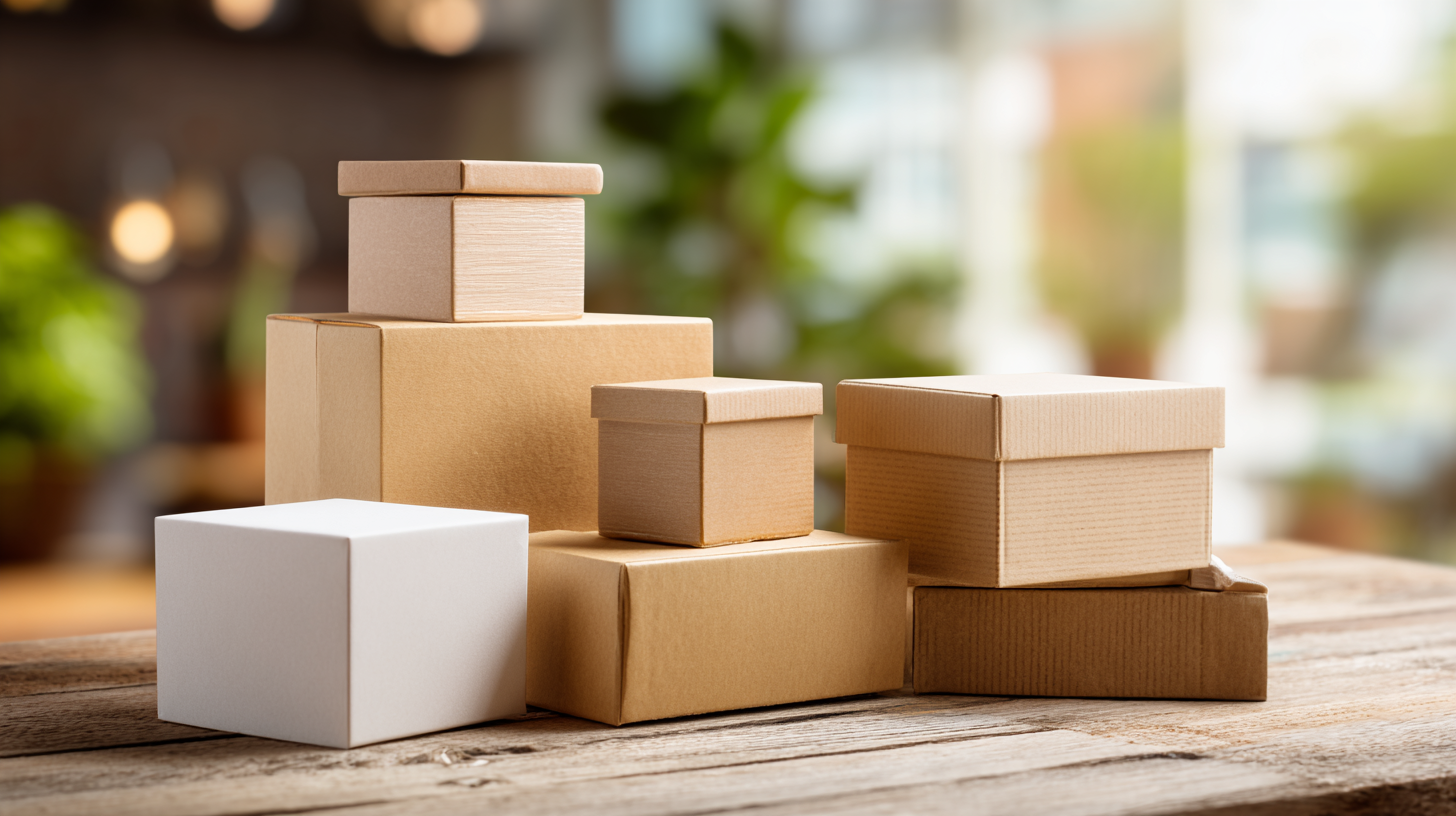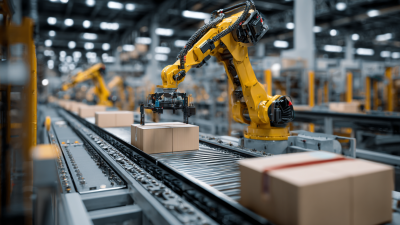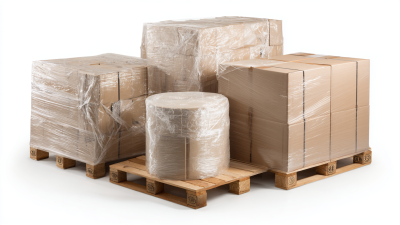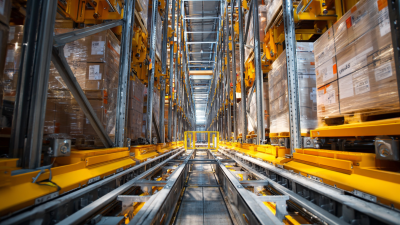BLOG
Top 10 Innovative Case Packaging Solutions Transforming the Industry in 2023
In today's rapidly evolving market, the importance of innovative case packaging solutions cannot be overstated. According to a recent report by Grand View Research, the global packaging market is projected to reach $1 trillion by 2027, with case packaging playing a pivotal role in this growth. As brands face increasing pressure to enhance sustainability while also optimizing logistics and consumer engagement, the demand for cutting-edge case packaging solutions has surged.
The year 2023 presents a unique landscape where innovative packaging designs not only improve product safety but also significantly influence consumer purchasing decisions. Research from the Packaging Innovation Forum suggests that 72% of consumers prefer products with sustainable packaging, highlighting a critical shift in buyer behavior. This demand for innovation is pushing companies to explore new materials, automated solutions, and creative designs that not only protect the product but also enhance brand visibility.

As we delve into the top five innovative case packaging solutions transforming the industry this year, it becomes clear that these advancements are more than just trends; they are essential strategies for success in a competitive marketplace.
Innovative Eco-Friendly Materials Revolutionizing Case Packaging for Sustainability in 2023
The packaging industry is undergoing a significant transformation in 2023, largely driven by the demand for sustainability. Innovative eco-friendly materials are at the forefront of this shift, with reports indicating that the global green packaging market is projected to reach $500 billion by 2027, growing at a CAGR of 5.7% from 2023. This growth is propelled by consumer preferences for biodegradable, recyclable, and sustainable packaging options, which not only reduce environmental impact but also enhance brand image.

One notable advancement is the use of mushroom-based packaging, which offers a fully compostable alternative to traditional plastic. According to a study by the Sustainable Packaging Coalition, companies adopting mycelium materials have reported a 30% decrease in carbon emissions during production. Additionally, plant-based inks and adhesives are gaining traction, as they align with the growing trend towards circular economy models. These innovations reflect a broader commitment within the industry to reduce waste and promote sustainability, making eco-friendly materials not just a choice for packaging but a necessity for competitive advantage in 2023.
Advancements in Smart Packaging Technologies Enhancing Supply Chain Efficiency
The advancements in smart packaging technologies are revolutionizing the supply chain landscape, particularly in food and pharmaceutical sectors. Smart packaging, which incorporates sensors, indicators, and sophisticated data management systems, enhances product traceability and ensures optimal conditions are maintained throughout the transportation process. For instance, in the case of temperature-sensitive pharmaceuticals, smart packaging solutions facilitate real-time monitoring of environmental conditions, thereby mitigating the risks associated with spoilage and ensuring compliance with safety regulations.
In the food industry, the adoption of smart packaging not only prolongs shelf life but also provides consumers with valuable information about the freshness and quality of products. The integration of technologies like machine learning and predictive analytics allows companies to optimize inventory management, reduce waste, and increase overall efficiency in their supply chains. As the demand for sustainability and transparency grows, smart packaging is poised to become an essential component for brands striving to meet consumer expectations and navigate regulatory challenges effectively.
Top 5 Automated Packaging Systems Driving Labor Cost Reductions in 2023
The landscape of automated packaging systems is evolving dramatically in 2023, significantly impacting labor costs across industries. Businesses are increasingly turning to **innovative automation technologies** to streamline their operations. These systems not only enhance efficiency but also play a crucial role in reducing manual labor requirements. By employing advanced robotics and software solutions, companies can maintain consistency in packaging processes while freeing human workers to engage in more complex tasks that require critical thinking.
Furthermore, the integration of artificial intelligence in warehouse management has set a new standard for operational excellence. AI-driven systems optimize inventory management and automate workflows, thereby minimizing errors and maximizing productivity. This transformation results not only in cost savings but also contributes to a safer workplace as machines handle repetitive and physically demanding tasks. As a consequence, the focus shifts towards maintaining a skilled workforce that is adept at managing and innovating alongside these emerging technologies, ensuring a balanced approach to automation in the packaging sector.
Consumer Preferences Shaping Packaging Design Trends for the Next Two Years
As we look towards 2025, the packaging industry is poised for a transformative shift, heavily influenced by consumer preferences that prioritize sustainability and personalization. The global packaging market is expected to grow remarkably, increasing from $1,109.44 billion in 2025 to an impressive $1,452.86 billion by 2032. This growth reflects a dynamic shift where consumers are increasingly drawn to brands that embrace innovative and environmentally-friendly packaging solutions.
The design trends emerging for packaging in 2025 will emphasize more than just functionality; they will focus on delivering artful presentations and engaging visuals that resonate with consumers. Anticipated trends include the incorporation of lively hues and playful designs that convey personality while adhering to sustainable practices. Additionally, we can expect a rise in AI-driven solutions that enhance the personalization of packaging, tailoring experiences to meet unique consumer needs and preferences. As sustainability and innovation take center stage, brands that successfully adapt their packaging strategies will not only meet consumer demand but also drive significant growth in this evolving market.
Top 10 Innovative Case Packaging Solutions Transforming the Industry in 2023
| Packaging Type | Key Features | Sustainability Level | Consumer Preference Score | Projected Growth (2024) |
|---|---|---|---|---|
| Eco-Friendly Materials | Biodegradable, Recycled | High | 85% | 15% CAGR |
| Smart Packaging | QR Codes, NFC Technology | Medium | 78% | 20% CAGR |
| Minimalist Design | Simple, Clean Aesthetics | Low | 80% | 10% CAGR |
| Reusable Packaging | Returnable, Deposit System | High | 88% | 18% CAGR |
| Interactive Packaging | Augmented Reality Features | Medium | 75% | 12% CAGR |
| Customizable Packaging | Personalization Options | Medium | 70% | 14% CAGR |
| Flexible Packaging | Lightweight, Space Efficient | Low | 73% | 9% CAGR |
| Tamper-Evident Packaging | Security Features, Transparency | High | 82% | 11% CAGR |
| Bulk Packaging Solutions | Space-Saving, Cost-Effective | Medium | 76% | 7% CAGR |
| Compartmentalized Packaging | Sectioned, Organized | High | 79% | 13% CAGR |
Impact of E-commerce Growth on Case Packaging Strategies and Innovations in 2023
The rapid growth of e-commerce in 2023 has significantly influenced case packaging strategies, pushing companies to innovate to meet the demands of a dynamic digital marketplace. With online shopping becoming the norm, packaging must now enhance the customer experience while ensuring product safety during transit. Companies are increasingly adopting sustainable materials and designs that not only attract consumers but also align with eco-friendly practices. This shift not only reduces environmental impact but also caters to a growing demographic of environmentally conscious shoppers.
Moreover, the rise of direct-to-consumer sales models has necessitated a rethinking of traditional packaging approaches. Businesses are creating packaging solutions that offer both functionality and branding opportunities, allowing them to stand out in a crowded e-commerce landscape. Features such as easy-open designs, tamper-proof seals, and reusable packaging options are becoming essential to meet customer expectations while ensuring product integrity. These innovative case packaging solutions are not just a response to current challenges; they are paving the way for a more efficient and consumer-focused packaging industry in 2023.

Related Posts
-

Optimizing Case Packing Efficiency: Insights from Recent Industry Reports and Best Practices
-

Revolutionizing Efficiency in Automated Packaging Solutions for Modern Businesses
-

The Future of Sustainable Packaging Equipment Innovations for Eco Friendly Solutions
-

10 Essential Tips for Choosing the Right Carton Packer for Your Business
-

Exploring the Benefits of Shrink Wrap Packaging for Sustainable Business Practices
-

Revolutionizing Warehouse Efficiency: The Science Behind Automatic Pallet Wrappers

